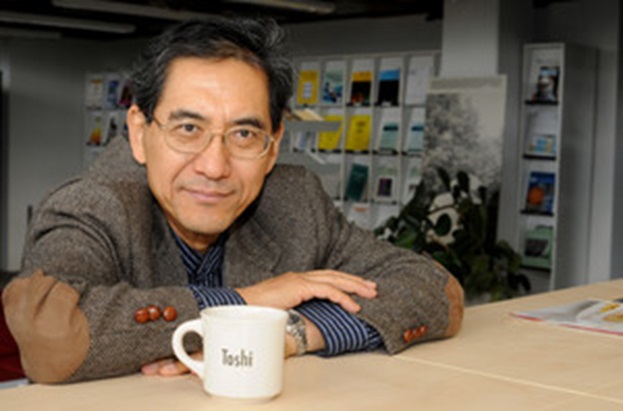Radioactive Waste 390 - French Physicist and U.S. Physicist Collaborate On Method To Use Laser Pulses To Reduce Radioactivity - Part 2 of 2 Parts
Toshiki Tajima.jpg

Part 2 of 2 Parts (Please read Part 1 first)
The process that Mourou and Tajima are investigating is called nuclear transmutation. Transmutation changes the number of protons in the nucleus of an atom and thereby changes the element. Mourou says “It’s like karate—you deliver a very strong force in a very, very brief moment.” (I would say that it could also be compared to cutting a diamond with a short sharp blow in the right place.) Transmutation research is not new. It has been going on for than thirty years in the U.K, the U.S., Germany, Belgium and Japan. A representative for CEA, the French agency responsible for disposal of highly radioactive materials says, “The research remains at the laboratory level and the prospect of seeing transmutation used at an industrial level is complex and expensive.”
A Fields-prize winning French mathematician and legislator said that there is no reason now to give up on transmutation. “What Mourou is really after is the accelerator that the laser creates,” he said. “It’s far-off, but why not?”
The Mourou and Tajima approach to transmutation calls for the development of an ultra-high-speed laser driven accelerator which can produce a beam of protons that will be able to penetrate the nuclear of atoms. If the nucleus either sheds a proton or captures a proton from the beam, the material changes from the original element to another element that is either less radioactive or not radioactive at all. One of the problems with current accelerators is that the proton beam has to travel a great distance to reach the target. Mourou and Tajima want to reduce the beam travel length by a factor of ten thousand.
Rodney C. Ewing is a professor of nuclear security and geological sciences at Stanford University. He said, “I can imagine that the physics might work, but the transmutation of high-level nuclear waste requires a number of challenging steps, such as the separation of individual radionuclides, the fabrication of targets on a large scale, and finally, their irradiation and disposal.” Radionuclides are atoms that are unstable and prone to radioactive decay emitting energy and nuclear particles.
Proponents of deep geological repositories such as the one under development at Bure say that we cannot wait for possibly decades for long shots like this laser driven nuclear transmutation to provide a solution for the accumulating spent nuclear fuel problem. There are also harsh critics of the idea of deep underground repositories.
Ground water could seep into a repository and carry out radioactive materials from disintegrating casks contaminating ground water. Ground water could also possibly leach and concentrate enough radioactive materials to cause a chain reaction. This could result in the release of superheated steam into the atmosphere or explosive hydrogen gas.
Bernard Laponche is a physicist who worked with Greenpeace to produce its report on spent nuclear fuel released this year. He is a serious critic of any plan to plant highly radioactive materials underground. He recently said in an interview, “Even if it means waiting for many more years, dozens of years, we should wait. We must give science a chance.”
It will take years if not decades to site and construct deep geological repositories for spent nuclear fuel. Perhaps, in the intervening time, the research of Mourou and Tajima may bear fruit and provide a better alternative for disposal.